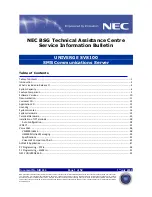
Chapter 3. Virtualization
123
Draft Document for Review October 14, 2014 10:19 am
5137ch03.fm
Micropartitions are created and then identified as members of either the default shared
processor pool
0
or a user-defined shared processor pool
n
. The virtual processors that exist
within the set of micropartitions are monitored by the POWER Hypervisor, and processor
capacity is managed according to user-defined attributes.
If the Power Systems server is under heavy load, each micropartition within a shared
processor pool is ensured its processor entitlement plus any capacity that it might be
allocated from the reserved pool capacity if the micropartition is uncapped.
If certain micropartitions in a shared processor pool do not use their capacity entitlement, the
unused capacity is ceded and other uncapped micropartitions within the same shared
processor pool are allocated the additional capacity according to their uncapped weighting. In
this way, the entitled pool capacity of a shared processor pool is distributed to the set of
micropartitions within that shared processor pool.
All Power Systems servers that support the multiple shared processor pools capability have a
minimum of one (the default) shared processor pool and up to a maximum of 64 shared
processor pools.
3.4.4 Virtual I/O Server
The VIOS is part of all PowerVM editions. It is a special-purpose partition that allows the
sharing of physical resources between logical partitions to allow more efficient usage (for
example, consolidation). In this case, the VIOS owns the physical resources (SCSI, Fibre
Channel, network adapters, and optical devices) and allows client partitions to share access
to them, thus minimizing the number of physical adapters in the system. The VIOS eliminates
the requirement that every partition owns a dedicated network adapter, disk adapter, and disk
drive. The VIOS supports OpenSSH for secure remote logins. It also provides a firewall for
limiting access by ports, network services, and IP addresses. Figure 3-5 shows an overview
of a VIOS configuration.
Figure 3-5 Architectural view of the VIOS
Virtual I/O Server
Hypervisor
Shared Ethernet
Adapter
Physical Ethernet
Adapter
Physical Disk
Adapter
Virtual I/O Client 1
Virtual Ethernet
Adapter
Virtual SCSI
Adapter
Virtual I/O Client 2
Virtual Ethernet
Adapter
Virtual SCSI
Adapter
Virtual Ethernet
Adapter
Virtual SCSI
Adapter
Physical
Disk
Physical
Disk
External Network
















































